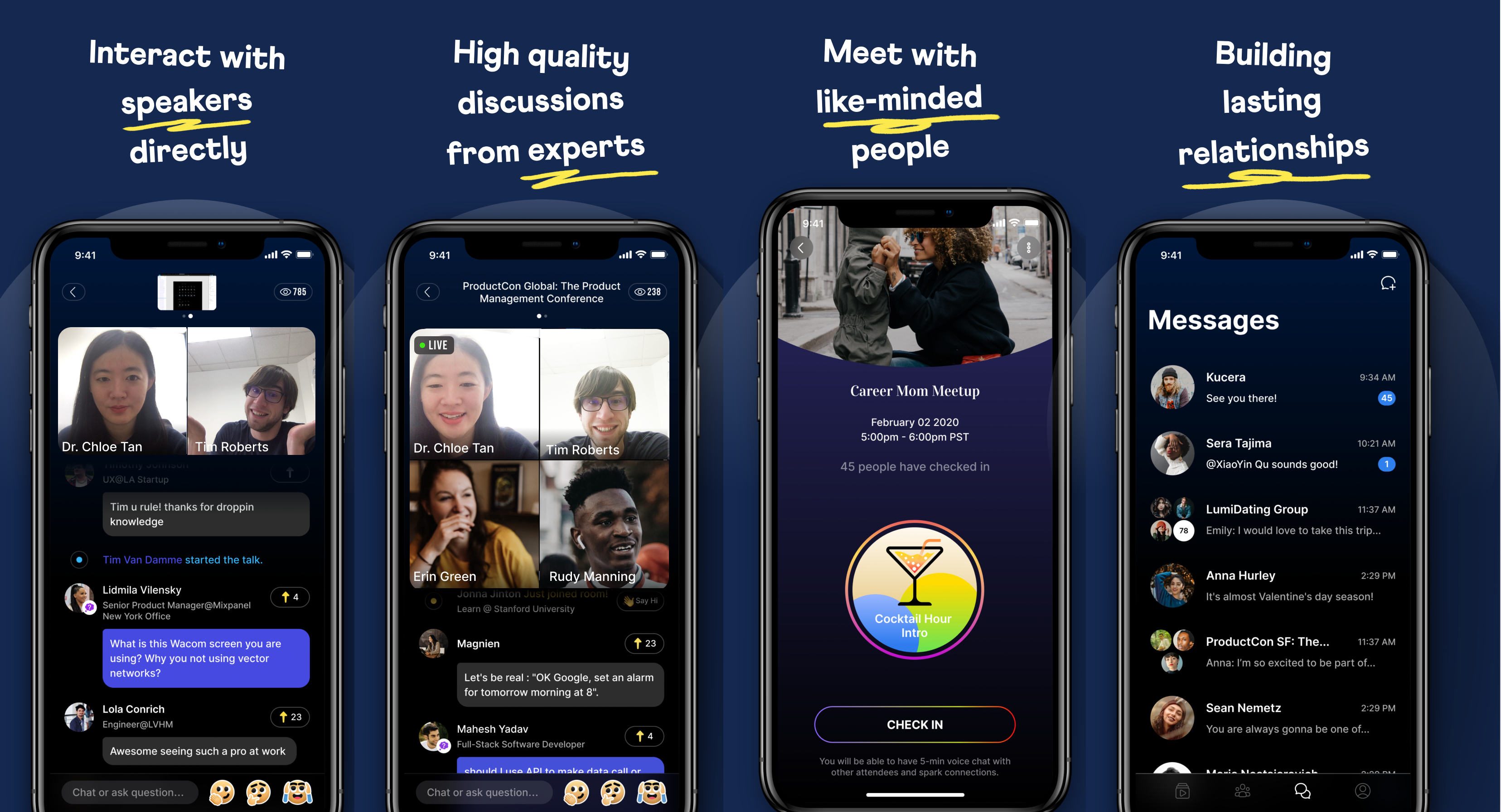Music
Trailers
DailyVideos
India
Pakistan
Afghanistan
Bangladesh
Srilanka
Nepal
Thailand
Iraq
Iran
Russia
Brazil
StockMarket
Business
CryptoCurrency
Technology
Startup
Trending Videos
Coupons
Football
Search
Download App in Playstore
Download App
Best Collections
Technology

The big climax arrives in Act Three. Therean uprising, as the robots take over the factory that created them. By the Epilogue, humankind is all but extinct. Fed up with their treatment, the robots have laid waste to the hands that created them, sparing only a single human — a fellow worker.
The decision may have ultimately doomed themselves, however, as they failed to save the one person capable of proliferating their kind. It is, however, the last living man who finds humanity in a pair of robots and likens them to the first two humans, in the biblical tradition. Ita hopeful note following an extinction that mostly occurred between acts. Two robots exit the stage, leaving the last man to utter the final words, &Adam—Eve.&
To borrow a phrase from another science fiction cautionary tale released seven decades later, &Life finds a way.&
Itthe final lesson of a play loaded to the artificial gills with allegory. Published 100 years ago (and premiering 99 years ago last month) R.U.R. (RossumUniversal Robots), by Czech writer Karel Čapek, is best remembered for bringing the word &robot& to sci-fi — and English, generally. Ita key piece of the seven-time Nobel Prize-nominated writerlegacy, who infused deeply held political beliefs into his early science fiction writings.
Čapekuse of &robot& is rooted in the Old Church Slavonic word, &robot,& which translates to forced labor& or &worker& in some derivations. &The word also has cognates in German, Russian, Polish and Czech,& history professor Howard Markel explained in a 2011 interview with NPR. &And itreally a product of the Central European system of serfdom, where a tenants& rent was paid for in forced labor or service.&
The concept of robots as forced labor dates back at least as far as the word robot itself — so, too, does the notion of a robotic uprising. That is to say that &kill all humans& wasn&t uttered first by Bender in Futurama or in the comments section of Boston Dynamics& Big Dog YouTube video. No, the first commonly understood robots to bear that name were wholly invested in returning power to the hands of the exploited workers — by any means necessary.
The roots of robotics in human society is commonly acknowledged to date back centuries prior, to classical cultures like Greek mythology and the golems of Jewish tradition. But Čapek is the one who gave us the word we still use today.
Of course, the writerrobots were more human than we presently associate with the word. In fact, perhaps, more in common with the older term, &android,& which stems from a Greek term that translates to &having the form of a man/human.& The robots of R.U.R. are living beings, built of artificial flesh, who eventually inherit the Earth.
&When the play opens, a few decades beyond the present day, the factory had turned out already, following a secret formula, hundreds of thousands, and even millions, of manufactured workmen, living automats, without souls, desires or feelings,& the official &Story of the Play& explains. &They are high-powered laborers, good for nothing but work. There are two grades, the unskilled and the skilled, and especially trained workmen are furnished on request.&
Set largely in the year 2000, the play grapples with questions of humanity decades before either Blade Runner or its source material, with the robots ultimately achieving a sort of humanity somewhere between Pinocchio and OzTin Man, albeit out from the ashes of the human creators they murdered en masse. A happy ending, perhaps, by 1920 standards.
For more robotics, check out our upcoming event March 3 at UC Berkeley.
- Details
- Category: Technology Today
Read more: ‘Robot’ was coined 100 years ago, in a play predicting human extinction by android hands
Write comment (90 Comments)
&We want to change the way freight moves,& says Oren Zaslansky, the chief executive and founder of Flock Freight.
His company, which has been operating in stealth mode for the last two years, has finally emerged with a new solution for freight shipping that purports to bring in more money to shippers, remove inefficiencies in the current hub-and-spoke model for freight and offer better deals to shipping customers.
Healso got $50 million in financing in the bank in what is one of the largest recent investments in a San Diego-based company.
For Zaslansky, the shipping business is a family affair. &My parents grew up in the moving business… I grew up around both entrepreneurship and freight,& he says.
Those twin passions led him to start his own trucking business out of college in the San Diego area. He also launched a brokerage business to support supply chain logistics. The exposure to both is what led Zaslansky to launch Flock Freight and its big new financing round, which closed earlier this week.
The company raised its cash to change the way shippers move small amounts of goods — those less-than-a-truckload-sized amounts that have to move through hub-and-spoke operations which increase the time goods are on the road and the possibility for breakage as they&re unloaded and reloaded onto different delivery vehicles.
&We want to disintermediate the infrastructure of hub and spoke,& says Zaslansky. &We want to carpool. We use our technology to change the way freight moves.&
Zaslansky isn&t talking about very small orders that can be delivered through a service like Roadie — the delivery company that raised $39 million from investors led by Home Depot back in February 2019.
This is still trucking — ita carpool in a 70-foot-long tractor trailer. Flock Freight works by reaching out to small and mid-size trucking companies and integrating their orders onto the shipments that these firms are already making. &We go to the carriers that are much more used to working with a third party to fill up empty trucks,& Zaslansky says.
Right now, thatabout 15% of the $110 billion freight and logistics trucking market, Zaslansky says.
The new investments into Flock Freight came fromSignalFire and GLP Capital Partners in mid-February and they were likely drawn to the companyclaims that its service can eliminate damage claims, collect freight from multiple shippers and optimize route delivery for a 40% savings in fuel emissions, and the guaranteed delivery rate of 97.5%.
Companies like Tuft - Needle and Titan Supply Group are already using the companyservices, according to a statement from Flock Freight.
Flock Freight makes its market by having a window into the spare capacity of trucks and charging shippers for the exact amount of capacity that they&re using. &We want to go to a shipper and say — that [cargo] is 75% of the truck and we&ll charge you 75% of the truck,& said Zaslansky. For carriers, they can say that the price they&ve charged is for 100% of the truck and Flock Freight will add another 10 feet of freight and an additional $1,000 into a carrierpocket, Zaslansky said.
- Details
- Category: Technology Today
Read more: Improving the logistics of trucking, San Diego’s Flock Freight raises $50 million
Write comment (93 Comments)Pinterest is bringing on a new board member. The company announced today it has appointed Gokul Rajaram, Caviar lead at soon-to-go-public DoorDash, to its board of directors and as a member of its Nominating and Corporate Governance Committee. The addition signals Pinterestdesire to bring more digital advertising expertise to its board, given Rajaramexperience as product director of Ads at Facebook and product management director at Google AdSense.
&Gokul brings great experience and innovation to our Board and we look forward to his many contributions,& said Pinterest CEO and co-founder Ben Silbermann, in a statement. &His proven track record in shopping, digital advertising and content will be incredibly beneficial as we continue to bring inspirational experiences to users and advertisers on Pinterest,& he added.
 Currently, Rajaram serves on DoorDashexecutive team where he leads the premium food ordering service, Caviar, which DoorDash acquired from Square last year for $410 million. The Caviar deal included Rajaram and team, in addition to the servicerestaurant partnerships. At Square, Rajaram spent five years heading Caviar and before that, had led several product development teams.
Currently, Rajaram serves on DoorDashexecutive team where he leads the premium food ordering service, Caviar, which DoorDash acquired from Square last year for $410 million. The Caviar deal included Rajaram and team, in addition to the servicerestaurant partnerships. At Square, Rajaram spent five years heading Caviar and before that, had led several product development teams.
Rajarambackground also includes time at Facebook and Google, where he focused on digital ads. At Facebook, he helped the company transform its ads business to become mobile-first. And at Google, he helped launch the Google AdSense product and grow it into a substantial portion of Googlebusiness, Pinterest notes.
Other relevant experience includes time on RetailMeNotboard, as well as an investor and advisor to numerous startups, including those that intersected retail/e-commerce, analytics and social — like Pinterest-focused Piquora, mobile ad company Vungle, retail advertising startup PromoteIQ and many others.
Today, Rajaram additionally serves on the boards of The Trade Desk and Course Hero.
Rajaram has a bachelordegree in Computer Science Engineering from the Indian Institute of Technology, Kanpur where he was class valedictorian. He received an MBA from The Massachusetts Institute of Technology and a Master of Computer Science from the University of Texas at Austin, where he received the MCD University Fellowship.
His addition to Pinterestboard comes at a time when the companyad business is growing.
Earlier this month, Pinterest reported revenues for 2019 had topped $1 billion, up 51% over 2018. In the fourth quarter alone, Pinterest saw $400 million in revenue, up 46% year-over-year, and beating analyst forecasts of $371.2 million. Feed-based Shopping Ads contributed heavily to this growth, with the ads more than doubling in the second half of 2019 compared with the first. Pinterest also said its investment in measurement tools had been paying off. In Q4, conversion campaigns — which let advertisers track from pin clicks to actions, like adding items to a cart — grew by 150%.
The company said during earnings that scaling its ads business would continue to be a strategic priority in 2020, as it looks to capture more mid-size and international advertisers and make the service more shoppable.
&Pinterest is a beloved brand that inspires people to create a life they love,& said Gokul Rajaram, about his board appointment. &I&ve always been excited about Pinterestmission and impact on peopleeveryday lives, and am thrilled to help Ben, Evan, and the team continue building amazing products that empower people and advertisers around the world,& he said.
Rajaram joins other Pinterest board members Jeffrey Jordan, GP at Andreessen Horowitz; Leslie Kilgore, previously Netflix CMO; BVP partner Jeremy Levine; Fredric Reynolds, previously CFO at CBS; Michelle Wilson, previously from Amazon legal; and Pinterest co-founders Evan Sharp and Ben Silbermann.
- Details
- Category: Technology Today
Read more: Pinterest adds DoorDash exec and Caviar lead Gokul Rajaram to its board
Write comment (92 Comments)
The Citroën Ami is a new take on urban mobility. Itelectric, cheap and doesn&t require a license. In short, itless of a car and more of an electric scooter with two seats, doors and a heater. Jokes aside, the Citroën Ami could be a glimpse at the future of mobility.
The innovation isn&t in the technical aspects of the Ami. Citroën is positioning the Ami as an urban mobility solution. The size is perfect for narrow streets and the price is right to be competitive against public transport. The Ami is not classified as a motor vehicle. As such, operators do not need a license and can be as young as 14 in France and 16 in other European countries.
Passengers sit side-by-side in the heated compartment and under the panoramic roof. The 5.5kWh lithium-ion battery is housed under the floor and is good for up to 70 kilometers after a three-hour charge from a standard 220v outlet. The top speed is 45 km/h (28 mph).
And because ita Citroën, therea nod to the companyquirky past: The side windows open manually by tilting upwards like the classic 2 CV.
The Ami is available to consumers in several different ways. It can be rented long term at a cost of €19.99 (including VAT) per month with an initial payment of €2,644 (including VAT). The Ami can be rented through a car-sharing service for up to a day at a rate of €0.26 per min. Or, the Ami is available for purchase from €6,000 (including VAT).
Citroën is taking orders for the Ami starting on March 30 in France and several months later in Spain, Italy, Belgium, Portugal and then Germany. The first Ami vehicles are expected by June.
- Details
- Category: Technology Today
Read more: Citroën introduces a two-seat EV that costs €19.99 a month
Write comment (91 Comments)Every day, thereanother event-related cancellation owing to concern around coronavirus. Just today Microsoft announced it will not have a presence at the Game Developers Conference in mid-March &out of an abundance of caution.& Facebook also said today that it is canceling its annual F8 conference scheduled for May over coronavirus-outbreak concerns.
The last is a particularly big deal. F8 is by far the largest event that Facebook hosts every year, so itlittle wonder that it plans to host part of the event online.
Likely, Facebook will use its own tech toward this end. But there is a new option for other companies that are right now second-guessing their event plans, and thatRun The World, a year-old, 18-person company thatbased in Mountain View, Calif., and has small teams both in China and Taiwan.
What itdoing: smooshing together every functionality that a conference organizer might need in a time of a pandemic. Think video conferencing, ticketing, interactivity and networking.
Whobacking it: Andreessen Horowitz largely, though the company — which has raised $4.3 million in seed funding — also counts as investors GSR Ventures, Pear Ventures, 122 West Ventures, Unanimous Capital, and angel investors like Kevin Weil, the VP of product at the Facebook subsidiary Calibra; Patreon co-founder Sam Yam; and Jetblue Airways Chairman Joel Peterson.
Who started it: Xiaoyin Qu, who is the CEO of the company and previously led products for both Facebook and Instagram (&basically anything to do with entertainment influencers and creators,& she says of part of her time at Facebook).
She dropped out StanfordMBA program after a year to start the company last year with Xuan Jiang, a former colleague who was a technical lead for Facebook events, ads and stories. (Jiang does have a masterdegree — one in computer science from the Georgia Institute of Technology.)

We talked with Qu yesterday after learning about the company from Connie Chan, the general partner who led the deal for a16z.
Qu says the impetus for the startup ties to her mother, a doctor in China who focuses on meningitis and traveled to a conference in Chicago in late 2018 where she made a connection with a Dubai-based physician who was able to share with her some rare, valuable insight into his own work around meningitis.
That might not seem so exceptional to those who travel regularly, but it was enough of an ordeal for Qumother — who had to secure a visa; take off two weeks around the event, including for travel days; and spent a fortune on airfare and accommodations — that it was the first major trip she&d taken in 35 years.
As Qu half-joked, &It isn&t like at Stanford, where there are events held regularly that [local] doctors can even walk over to.&
Indeed, like a lot of founders who solve a pain point for themselves or someone they love, Qu wanted to create a platform where her mother could meet and have meaningful work connections with people regularly, and this would mean remotely, through digitized events.
Turns out, her timing is pretty good. Though numerous startups have launched live online events businesses in the past (many of them since shuttered), you can bet many more organizers are thinking about exactly the type of platform that Run The World is fine-tuning right now.
Though publicly launched just four months ago, it has already hosted dozens of events and has hundreds in the pipeline, says Qu. One of its customers is Wuhan2020, a large open-source community with more than 3,000 developers who will be using the platform as part of a long-distance hackathon that hopes to produce tech solutions to those affected by coronavirus in Wuhan.
Qu also points to an elephant conservation reserve in Laos that was recently able to raise $30,000 from donors from 15 countries in two weeks through a conference it organized on the platform. The reserve had a constrained budget, but being able to bring together a distributed audience (beyond just wealthy donors) for nearly zero overhead (no venue, no catering), turned it into a major success for the organization.
Smaller events are finding the platform, too. In just one instance, a dating coach who specializes in working with engineers recently held a workshop. Just 40 people showed up, says Qu, but she was able to make $1,300 from the event.
Run The World keeps the cost structure simple, taking 25% of ticket sales in exchange for what it provides organizers, from the templates they can choose for their events, to the ability to sell tickets, to processing those payments (via Stripe), streaming the event, enabling social interactions throughout the event, and helping organizers follow up with attendees afterward.
Indeed, beyond enabling organizers to reach a wider audience at perhaps a more accessible price point, a big advantage conferred by online events is the potential for more effective networking, insists Qu. For example, rather than walk into a physical space where itsometimes hard to know who to talk with about what, Run The World asks every event attendee to create a quick video profile akin to an Instagram story that can help inform other attendees about who is with them online.
It also organizes related &cocktail parties& where it can match attendees for several minutes at a time.
Naturally, there are also downsides to streamed live events as the world was reminded last year, when a gunman filmed the mass murder of 51 people in Christchurch, New Zealand on Facebook Live.
One could also imagine that those video profiles could attract unwanted attention to some attendees who might rather just watch an event.
These are certainly facets of the business about which Qu and Jiang are well aware. While the plan is to keep adding new features (including, potentially, to use LinkedIn to validate attendees& identities), Qu notes that another way to ensure the quality of the events on the platform remains high — and that attendees feel safe — is to steer clear of most free events.
&When organizers are recruiting their own people and curating a community& of paid attendees who they know or can ostensibly learn more about, it keeps things above the level, she suggests, noting that paid attendees also show up in far greater numbers.
As Run The World scales, she concedes, &we&ll need to figure out new ways.&
Certainly, the lessons learned at Facebook and Instagram should help as the business picks up momentum and creates more structure around its offerings, she says. Besides, Qu adds, &The ideal event to me isn&t one with 2 million people. I&d rather we hosted 2 million events with 50 people.&
- Details
- Category: Technology Today

Following a successful debut for Tinderfirst foray into original content, the company is giving its interactive video series &Swipe Night& another run. The company confirmed today itrenewing &Swipe Night& for a second season, which will launch this summer (again) as an in-app experience within Tinderdating app.
Variety first reported the news of &Swipe Night&s& return. Tinder further confirmed the details to TechCrunch.
&Swipe Night,& as you may recall, first launched in October 2019 within Tinder. The experience introduced a first-person adventure played in-app, where users would make choices at key turning points to progress the narrative — like a choose-your-own-adventure story.
The series was designed to increase user engagement and help the appyoung users better connect.
Today, half of Tinder is Gen Z (ages 18-25) — a demographic thatembracing their single lifestyle and more casual relationships compared with those on other dating apps, like Tinder parent company Match, for example, or its newer acquisition Hinge. These younger users connected with the idea of starting conversations based on a shared experience, says Tinder.
However, the reality is that &Swipe Night& had also arrived at a time when users were opening Tinderapp less on a daily basis, even as monthly usage climbed. Though &Swipe Night& only ran on specific dates in October 2019, users& choices within the interactive experience were added to their profiles. This allowed users to see who else agreed with their decisions and who took the opposite path. That made launching Tinder and swiping through profiles more compelling — even for those who may have been tiring of Tinder before the series& arrival.
The experiment worked. Tinder said millions of users tuned in to &Swipe Night,& and matches and conversations increased by 26% and 12%, respectively. With &Swipe Night,& it seemed, Tinder finally gave users something to talk about.
The returning second season of &Swipe Night& will again be directed by Karena Evans, who directed Coldplaymusic video &Everyday Life& and Drake&In My Feelings& and &GodPlan.& This time, it will be written by Jessica Stickles (&Portlandia,& &Another Period&) and Julie Sharbutt (&3 Days&).
&Working on Swipe Night was such a fulfilling experience for me. I got to do something that had never been done before and innovate with storytelling to bring a generation of people together. I&m in search of projects that impact, shift or curate a culture and couldn&t be more excited to return for more,& said Evans, in a statement.
&Swipe Night&s& second season may see Tinder tweaking the formula a bit, and may even introduce new mechanics to keep it feeling fresh.
In addition to the Season 2 launching in the U.S., Match previously confirmed that 10 international markets across Europe and Asia will get &Swipe Night& this year. Tinder said today that Season 1 would be launching internationally on March 14th, but declined to say when those users would receive Season 2.
- Details
- Category: Technology Today
Read more: Tinder’s video series ‘Swipe Night’ gets a second season
Write comment (90 Comments)Page 1373 of 1441

 5
5





